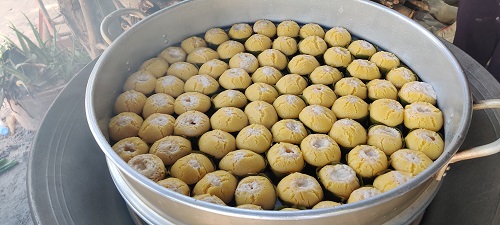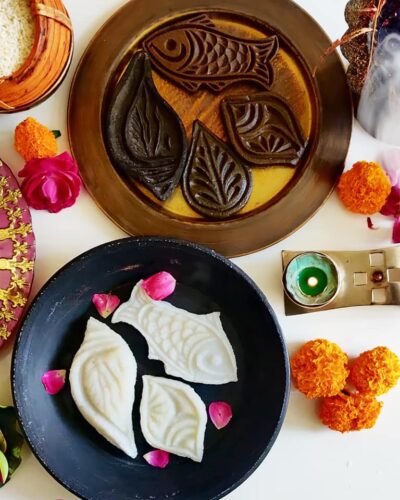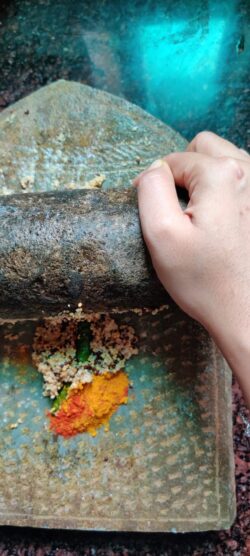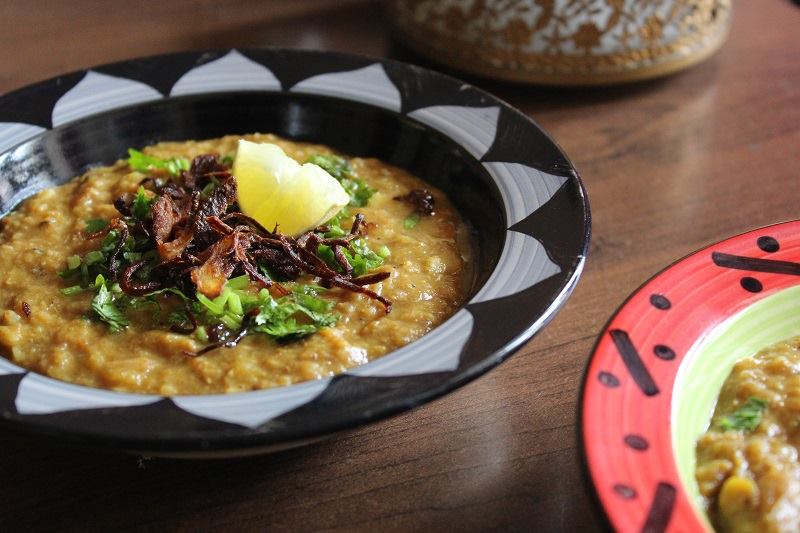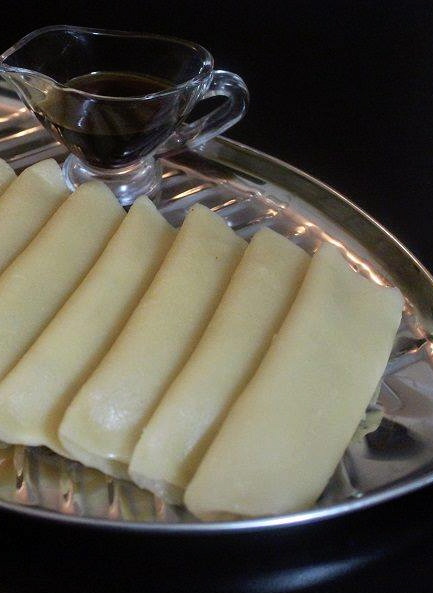
Patishapta is a story to pass on to coming generations, lot of memories to hold on to and a personal experience for me. Such was my father’s love for this deceptively simple looking dessert that I often suspect that if there is anything in this world that my mother felt jealous of, it must have been the patishapta! The only thing that gave Ma the upper hand was that she was the creator and the patishapta her perfect creation.
Patishapta was made throughout the year in Ma’s kitchen. Mostly as impromptu evening snacks for Baba. To watch her apply a thin layer of oil or ghee with the calyx of a brinjal, pour a ladle-full of batter on to the pan and rotate it to form a perfect circle which she would roll around the stuffing into even sized, perfect patishaptas was like watching ballet. Baba’s face would light up at the sight of these and he would make countless trips to the kitchen in some pretext or the other.
With the singular aim of eating patishaptas straight, hot, off the girdle. In spite of their year-long presence in our house, they are still a special guest during Poush Sankranti. No matter how many varieties of pithe-puli Ma made, Baba would still look for a patishapta. But don’t mistake him for a lover blinded by love – he was a true connoisseur. Each patishapta had to be uniformly cooked, soft, without any blemishes and with a mildly sweet stuffing. That is where Ma always scored a perfect 10!
I tried my hand at making one when I was in school, it was a bid to impress Baba. I had tried making ones with chocolate filling and various nuts to trump Ma and secure his attention. It was a singular attempt, though generously appreciated. I figured, it wasn’t as easy as it looked. And those were not days of non-stick tawas. The batter, the heat, the cooking time – everything had to be spot on. These beauties don’t roll over easily into their slender, blemish-free avtaars if you loose sight for a few seconds. The question is how does one define a patishapta? It is a stuffed crepe but yet not!
A patishapta and a crepe are like cousins from the same family but with very different world view. The casing tastes different, smells different and has different textures. So is the filling. Yet, limited as we humans are in your capacity to capture beauty in words, lets make peace with the cousins standing in each other’s support as a point of reference.
Patishapta recipe
Will make about 12 For the batter
White flour: 1 cup
Semolina: 1/4 cup
Rice flour: 1 tbsp
Jhola gur (Molasses of date palm): 2 tbsp or Powdered sugar: 1 tbsp
Milk: 1 cup
Stuffing Khoya: 150 gms
Grated coconut: 100 gms
Cashew: 6-8 (broken)
Milk: 1/2 cup
Green Cardamon: 1 (pounded)
Powdered sugar: 3 tbsp or to taste
Ghee: 1 tsp Refined vegetable oil or ghee
To make the stuffing
1. Heat the ghee in a pan, add the cashew and coconut and lightly roast till fragrant;
2. Add the khoya and green cardamom and roast the khoya till it starts melting. Keep the flame extremely low;
3. Add the milk and sugar, mix well. Cook till everything comes and the ghee starts separating from the mixture;
4. Take off the pan and set aside to cool.
To make the patishapta
1. Mix all ingredients together in a bowl to make a smooth runny batter. The batter should be thinner than a cake batter but not watery. Set aside for ten minutes;
2. Heat a non-stick pan over low heat and smear a thin layer of ghee or oil;
3. Pour a small ladle full of the batter onto the pan, swirl the pan around to spread the batter into a thin circle; 4. Just when the edges start cooking and the rest of it is semi-cooked, add a line of stuffing towards one end of the circle and quickly roll the crepe around it. Press the edges lightly to seal the stuffing inside;
5. Serve with some jhola gur or by itself.



